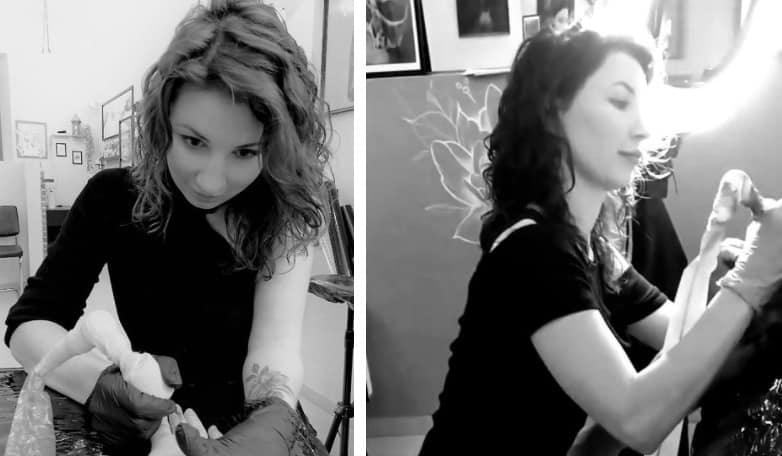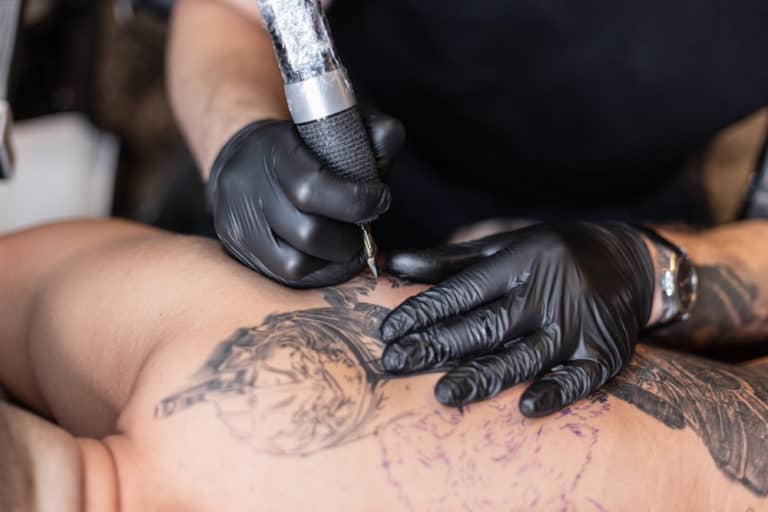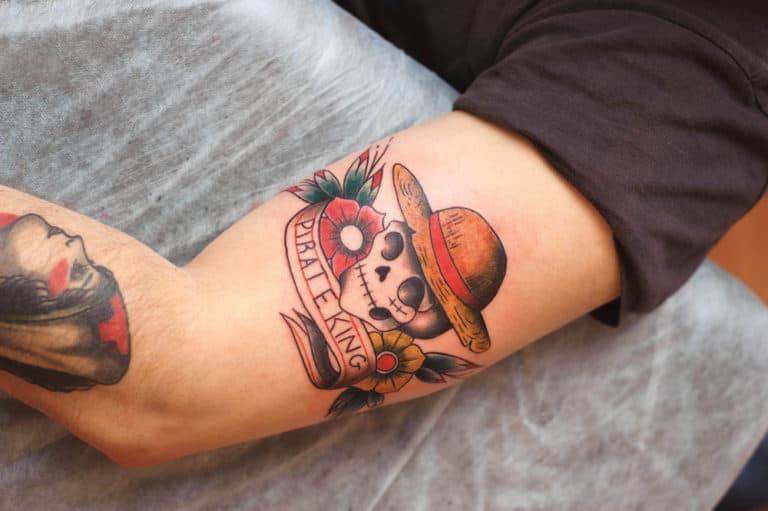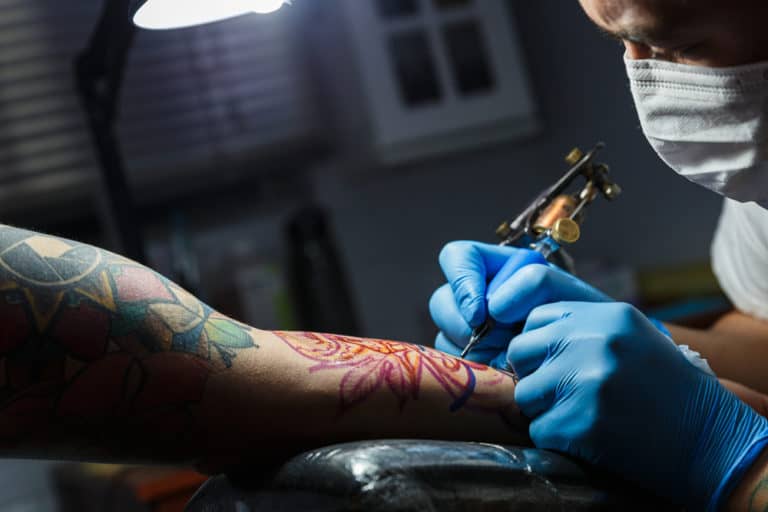Why Can’t You Donate Plasma After Getting A Tattoo?
Donating plasma saves lives, and many people with rare and chronic disorders depend on this life-giving material. Plasma is also used in emergencies to stop bleeding. If you have recently gotten a tattoo, you may therefore be surprised to find that you cannot make a donation for a considerable length of time.
You can donate plasma after getting a tattoo. Most centers have a waiting period of between 4 and 12 months. This time is between the date you acquired your last tattoo and the donation date. There is a risk that pathogens or foreign material may have entered your body during the tattoo process.
There is a lot of conflicting information about when you can donate plasma after getting a tattoo. The info tends to get jumbled in with regulations about blood donation. Let’s cover why you can’t donate plasma straight after getting a tattoo and the reasons for this.
Why Can’t You Donate Plasma After Getting A Tattoo?
Getting a tattoo does not permanently exclude you from donating plasma. Once the required wait period is complete and you fulfill all the other requirements for plasma donation, your life-saving donation will be welcomed at accredited plasma collection centers.
There is a precautionary wait period between the date of your last tattoo and the date you donate plasma. This is usually four months, and you may need to take proof that your tattoo was done at a licensed tattoo facility. This is the plasma center’s assurance that the material they collect has not been tainted by using unsterile equipment or reusing ink.
The confusion is that some states do not license tattoo facilities. This makes it challenging to standardize the waiting period between getting a new ink and donating either plasma or blood.
It can be disappointing if you are a regular plasma donor to find that you cannot donate for at least four months after you got your last tattoo. Besides being a potentially life-saving gesture, some donors have added plasma donation into their regular extra income stream.
Unlike blood donation, donors are often compensated, which can be a further disappointment if you are not allowed to donate as expected. It is, however, essential to remember that plasma is often used for highly vulnerable patients. Collection facilities take every precaution to ensure that the material they collect is free of harmful agents.
Your plasma donation is still very much required if you have tattoos. The only delay will be the mandatory waiting period, which is usually around four months between the date you had your last tattoo and your donation appointment.
However, the period may differ between collection centers, and a lot also depends on where you had your tattoo done. A state-regulated facility vs. an afternoon session with your artist friend in his garage will likely result in vastly different wait times. If your recent tattoo was done at a licensed facility, take along proof to your plasma donation appointment.
It is best to contact your closest plasma donation center to get the details about their specific eligibility requirements. Time will fly by, and you will soon be showing off your latest ink to the technicians as they are harvesting your plasma.
How Do You Become A Plasma Donor?
If you have had a tattoo, we know you’re not afraid of needles, so plasma donation will be a walk in the park! However, a strict donor eligibility screening needs to be successfully completed before you can achieve qualified donor status.
The first step in your plasma donation process is to check that you qualify. A recent tattoo may mean that there is a delay before you will be able to donate, but that is not the only requirement to be able to become a plasma donor.
The delay time between your last tattoo and donating can vary from one facility to the next. While some don’t specify an exact waiting period, others, like CSL Plasma, one of the biggest agencies, have listed the minimum four-month waiting period on their basic eligibility requirements.
Besides tattoos, other procedures like recent piercings or surgeries will also be taken into account. Plasma donors must also fulfill the following basic requirements:
- Be over 110 pounds
- Be over the age of 18
- Must test negative for specific viruses
- Must pass a medical examination
- Must have valid identification and a permanent address
Can You Give Blood After Getting A Tattoo?
The need for blood donors is greater than ever, and rules about blood donation have recently been relaxed. There was a time when tattooed donors would have to wait up to 12 months, but since the tattooing industry has become more regulated, there is much more trust between the medical sector and skin artists.
There are only nine states that have not regulated tattoo parlors, and if you live in one of these, you may not be able to give blood immediately after getting your new ink:
- Utah
- Wyoming
- Idaho
- Georgia
- Maryland
- Massachusetts
- New Hampshire
- New York
- Pennsylvania
In all other states, if you have proof that you were inked at a state-regulated facility, you will be able to donate blood immediately. State licensing ensures that the needles are sterile and inks are never reused.
Plasma Vs. Blood Donation
In terms of patient experience, the blood and plasma donation process are similar but not exactly the same. One of the
| Plasma Donation | Blood Donation |
| Can donate every 28 days – can be more frequent when donating at private companies. | Can donate once every 56 days |
| Compensated – sometimes in cash | Not compensated. May receive a small gift. |
| Initial visit: 2-2.5 hours. Subsequent donations: 1 – 1.5 hours | It takes about 45 minutes |
| Plasma is harvested from blood, and other parts of the blood are returned back into the donor. | Whole blood is removed in a one-way direction |
| The minimum donor weight is 110 pounds | Must weigh at least 120 pounds |
| Universal donor group: AB Blood | Universal donor group: O-negative blood |
Donating plasma takes a little longer than donating whole blood, but you can donate more often. That is because only a portion of your blood is removed, and the rest goes back into you.
All blood groups are welcome and encouraged to donate blood and plasma. However, your donation is especially welcome if you fall into the O blood group. Type 0 negative because it can be used universally in emergency situations, while type O positive is the most frequently occurring blood type, so it is most often required. In the case of plasma donors, AB blood is the universal type.
From a patient experience, the procedure doesn’t feel a lot different, except that plasma donation often takes slightly longer. That is because once the plasma is removed, other material, including red blood platelets, are mixed with a saline solution and returned via the same line back into your body. The additional saline helps to keep you hydrated.
What Are The Side Effects Of Donating Plasma
The side effects of donating plasma are usually less significant than the minor side effects sometimes associated with giving blood. This is because only the plasma gets removed from your blood. Everything else gets put back along with some saline to rehydrate your body.
While some side effects are associated with donating plasma, they are rare, and most people can regularly donate without experiencing any adverse effects. Some potential side effects can include:
- Discomfort around the needle site – a plasma needle, called a bore needle, is slightly larger than a blood donation needle.
- Fatigue or dizziness – This is usually fairly mild as the collection is done while you relax with your feet up. The procedure will be immediately stopped if you have any symptoms like fainting, nausea, a drop in blood pressure, or sweating.
- Allergic reaction to citrate – this is a blood-thinning agent used in the cell separating machine to prevent the blood from clotting while it is out of your body.
- Infection – the wound site should be kept clean. An infection can occur if bacteria enter the body through a needle puncture.
- Localized allergic reaction – An allergic reaction can happen from the cleaning agent used to sterilize the needle site. Symptoms are usually mild and include itching, swelling, or redness.
- Bruising – A slight amount of bruising at the needle site is common after the procedure. The area may also feel warm or tender. This can usually be eased by applying a cold compress.
Can I Donate Plasma If I Have Had Covid-19?
Covid-19 has had devastating effects around the globe. Many people had the virus, and if you are one of them, you may be wondering if your plasma is safe to donate.
The answer is a resounding yes. So long as you have fully recovered and been symptom-free for at least 28 days, your plasma donation will be welcome. In fact, your plasma will be classified as convalescent plasma.
There are two types of plasma collected. Most is standard plasma which is general use plasma. If you have recovered from Covid-19 or had the vaccination in the past six months, your plasma should contain high levels of antibodies. Fortunately, the need for convalescent plasma with Covid-19 antibodies has dropped significantly in the past few months.
Is Donating Plasma Safe?
Since donation centers often pay for plasma but not blood, you may wonder if there is a hidden catch or if it is entirely safe. Technically, plasma donors are paid for their time and not so much for the collected material. It does take a little longer than donating whole blood.
A lot of honesty is required while completing the registration process before each visit to donate whole blood. If there was an incentive, the concern is that donors may lie and put vulnerable patients at risk. Blood donors are also not usually compensated because it may be regarded as easy money, and ineligible donors may come forward simply to make some extra cash.
However, private plasma collection companies often pay attractive amounts to attract donors and keep them coming back. You will be relieved to know that donating plasma can be a safe side-hustle if you are eligible. Besides doing something good to help others, you get to put your feet up, and you could potentially make hundreds of dollars, especially in your first few visits.
Donating plasma feels very similar to donating blood, except you can do it more frequently. To ensure that your plasma donating center is fully accredited and safe, check that it is recognized by the International Quality Plasma Program (IQPP). This will ensure that you are in good hands as the center adheres to global industry standards for collecting plasma.
Does Donating Plasma Hurt?
Plasma donating should feel the same as donating blood. You naturally won’t want to move your arm about while the plasma is being extracted, but there is no active pain sensation. There will be a slight and very temporary pinch sensation in the spot where the needle is inserted, but once it is in, there shouldn’t be any discomfort.
During the collection process, try to relax and distract yourself with your phone or listen to music. There may be a slightly uncomfortable sensation where the needle is inserted, but since you know it’s only temporary, it doesn’t bother most people.
After the donation is complete, there may be slight soreness or a bit of bruising where the needle was inserted. This is usually very minor. You should wear your band-aid with pride and let everyone know that you have been on a life-saving mission.
Conclusion
You can donate plasma after getting a tattoo. Depending on your state and where you had your tattoo done, there may be a waiting period of between 4 and 12 months. The waiting period is to prevent the spread of blood-borne diseases that you have been exposed to during the tattoo process.
People with tattoos are welcome to donate plasma and blood so long as they meet all the eligibility requirements.
Some of my favorite designs, tattoo books, and aftercare products, selected for you

Thank you for reading my article, I hope that you have found it helpful. If you would have trouble finding ideas for your tattoo, wonder what is meaning of design that you have found or what to buy for aftercare, to make sure that your tattoo will be healing quickly and easily, here are some of my favorite products in one place, hope that this will also help.
Design and tattoo ideas
For some ideas you can have a look at those 3 books with hundreds of designs that I use with my clients, they are available on Amazon for Kindle or in classic, paper version (links below):
- Great Book of Tattoo Designs, Revised Edition: More than 500 Body Art Designs (Fox Chapel Publishing) Fantasy, Celtic, Floral, Wildlife, and Symbol Designs for the Skin by Lora Irish
- The Big Book of Small Tattoos – Vol.1: 400 small original tattoos for women and men by Roberto Gemori
- Tiny Tattoos: Over 1,000 Small Inspirational Artworks by Rebecca Vincent.
Tattoo meaning
If you would like to read more about the meaning of different tattoo styles and designs before you will decide what you would like to have, I can recommend a book that was really useful for me when I was starting my tattoo adventure – it’s “Conscious Ink: The Hidden Meaning of Tattoos” by Lisa Barretta (through the link you can find it on Amazon for around $10).
Tattoo aftercare
The skin at the tattoo site often dries out. To prevent it and speed up healing for my clients, I usually recommend one of those tattoo aftercare balms (you can find them on Amazon):
References
- https://www.statnews.com/2016/01/22/paid-plasma-not-blood/
- https://www.webmd.com/a-to-z-guides/qualifications-for-plasma-donation-and-what-to-expect-when-donating#
- https://www.donatingplasma.org/donation/find-a-donor-center
- https://www.uchealth.org/today/can-you-donate-blood-after-gettting-a-tattoo/
- https://www.healthline.com/health/how-often-can-you-donate-plasma#blood-vs-plasma
- https://www.healthline.com/health/can-i-donate-plasma-after-covid-vaccine







